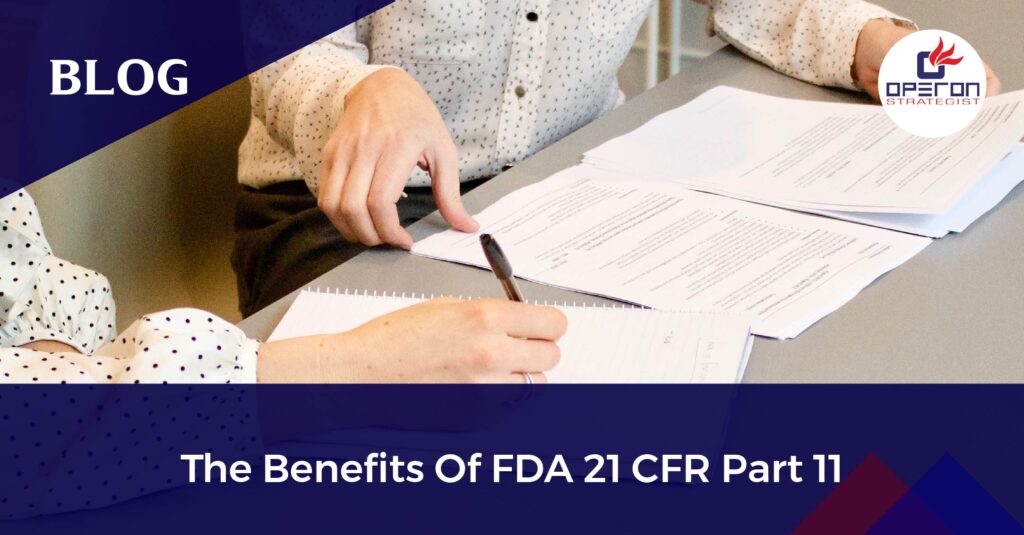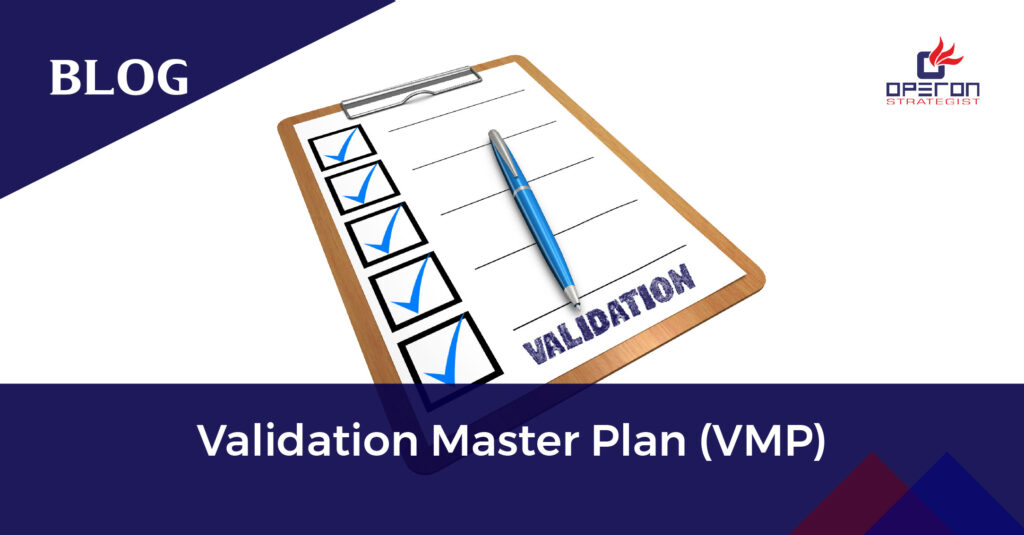Benefits of FDA 21 CFR Part 11 provide an opportunity for medical device companies to reap the organizational advantages of paperless record-keeping systems. It also helps the FDA ensure that when medical device companies use electronic record-keeping systems, that document security and authenticity are adequately maintained.
The regulation sets out a framework for properly managing digital records so that they meet the requirements for regulatory inspection by the FDA. While facilitating regulatory oversight is the core focus by Benefits of FDA 21 CFR Part 11, the driving force behind it was, in fact, to ease the cost and burden of maintaining paper records to satisfy regulators.
- Operon Strategist is FDA 510 k process consultant helps the clients to register SBU (Small Business Unit), if applicable.
- Take out the testing requirement of the product, creation of the dossier, resolving the queries and after completion of all the activities.
Benefits of FDA 21 CFR Part 11 validation can be challenging depending on the type of quality management system you’re using, but it shouldn’t deter you from using a software of any sort to manage these functions.
Benefits of FDA 21 CFR Part 11 establishes the standard criteria under which the FDA considers electronic records, electronic signatures, and handwritten signatures executed to electronic records to be trustworthy, reliable, and generally equivalent to paper records and handwritten signatures executed on paper
It is meant to ensure the authenticity, integrity, and confidentiality of electronic records. These rules and regulations help to ensure robust and reliable study data that will stand up to the scrutiny of regulation and help to ensure future patient safety and effective medicines. Most companies have focused their Benefits of FDA 21 CFR Part 11 compliance efforts on manufacturing, on clinical trials, and on development, because that has been the focus of FDA auditing efforts. But it also makes good sense to design a discovery automation system to comply with Part 11.
Looking Forward To US FDA 510k Process For Medical Devices ?
We also assist with the establishment registration and device listings to make suitable the supply of medical devices in the US.
Requirements of 21 CFR Part 11
- Validation
Validation of systems to ensure accuracy, reliability, consistent intended performance.
- Record Generation
Part 11 stipulates that your eQMS must have an indexing and search functionality, so that records can be found quickly and easily.
- Audit Trails
Use of secure, computer-generated, time-stamped audit trails to independently record the date and time of operator entries and actions that create.
- Operational Control
A sophisticated eQMS will allow for quality procedures to be monitored and be controlled by the phase gating. This will ensure that the documents are reviewed by specified individuals and that they meet specified requirements before they are signed off and a contingent phase begun.
- Security Controls
Entry to a system should be controlled by unique log in and passwords. Your eQMS should have the ability to specify the number of people who can alter certain documents.
- Digital Signatures
The requirements for the use of digital signatures are clearly mapped out in 11. Part 11 reminds us of their specific definition.
- Training
Part 11 dictates that all systems users have the necessary training to perform their assigned tasks and projects.
Benefits of FDA 21 CFR Part 11
FDA 21 CFR Part 11 helps organizations reduce the cost of managing and documenting their entire labeling lifecycle, from routing and approval workflow, version control and comparison, to audit trails and reports.
By becoming FDA 21 CFR Part 11 compliant, manufacturers will benefit from:
- Reduced costs by removing manual and paper processes whilst improving workflow processes
- Improved traceability – electronic records are simpler for gathering, filtering, and presenting information for internal use or FDA audits
- The ability to print, reprint and reconcile labels at any time
- Stronger controls over users’ ability to design, amend and approve labels
- Better management of global data including product data, symbols, graphics, and languages
What is US FDA 21 CFR Part 11?
FDA 21 CFR Part 11 allows medical device and life science organizations to use electronic records and signatures in place of paper.
The regulation applies to all aspects of the research, clinical study, maintenance, manufacturing, and distribution of medical products, and covers:
- Required records that are maintained in electronic format in place of paper format
- Required records that are maintained in electronic format in addition to paper format, and that are relied on to perform regulated activities
- Records submitted to FDA in electronic format
- Electronic signatures that are intended to be the equivalent of handwritten signatures.
Regulatory compliance is not something that anyone is excited about tackling. However, CFR Part 11 is an essential component in protecting the industry from bad actors and slips in quality assurance. While it may feel like a chore, it is important to remember that its history is rooted in freeing the life science, biotech, and pharmaceutical industries from being tied to paper records. With the right solution in place, Benefits of FDA 21 CFR Part 11 can not only be smoothly integrated into your organizational workflow – it can be a framework for improving your operational efficiency and reducing delays and costs for your organization on several levels.

-
Operon Strategisthttps://operonstrategist.com/author/snehal/
-
Operon Strategisthttps://operonstrategist.com/author/snehal/
-
Operon Strategisthttps://operonstrategist.com/author/snehal/
-
Operon Strategisthttps://operonstrategist.com/author/snehal/





